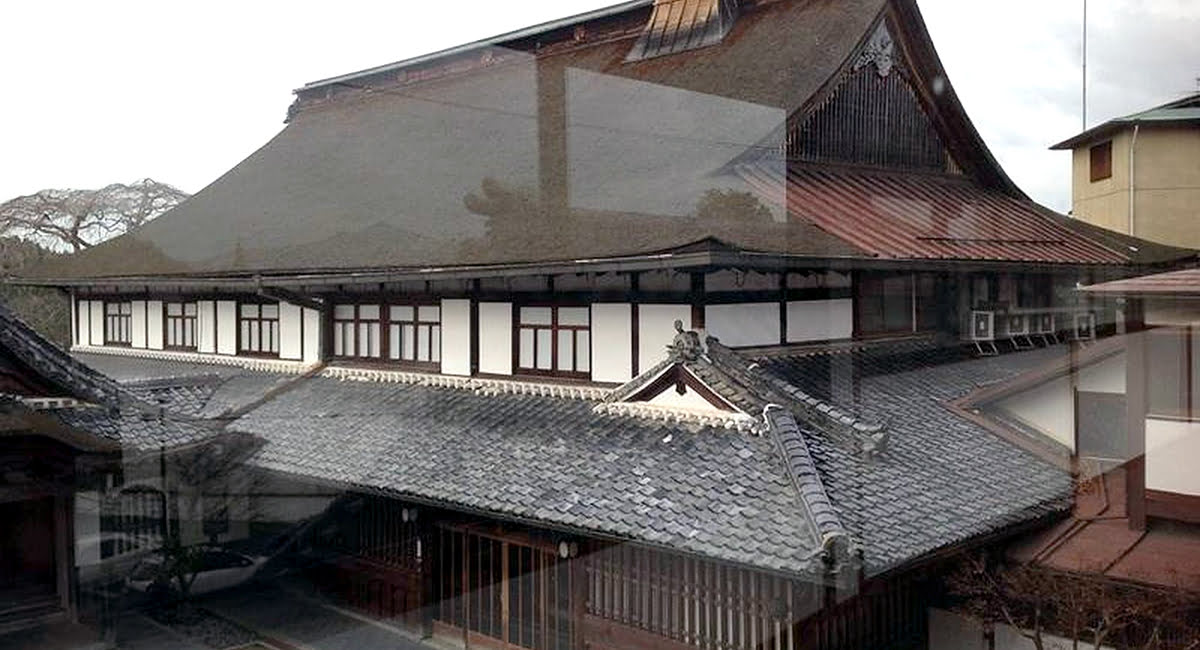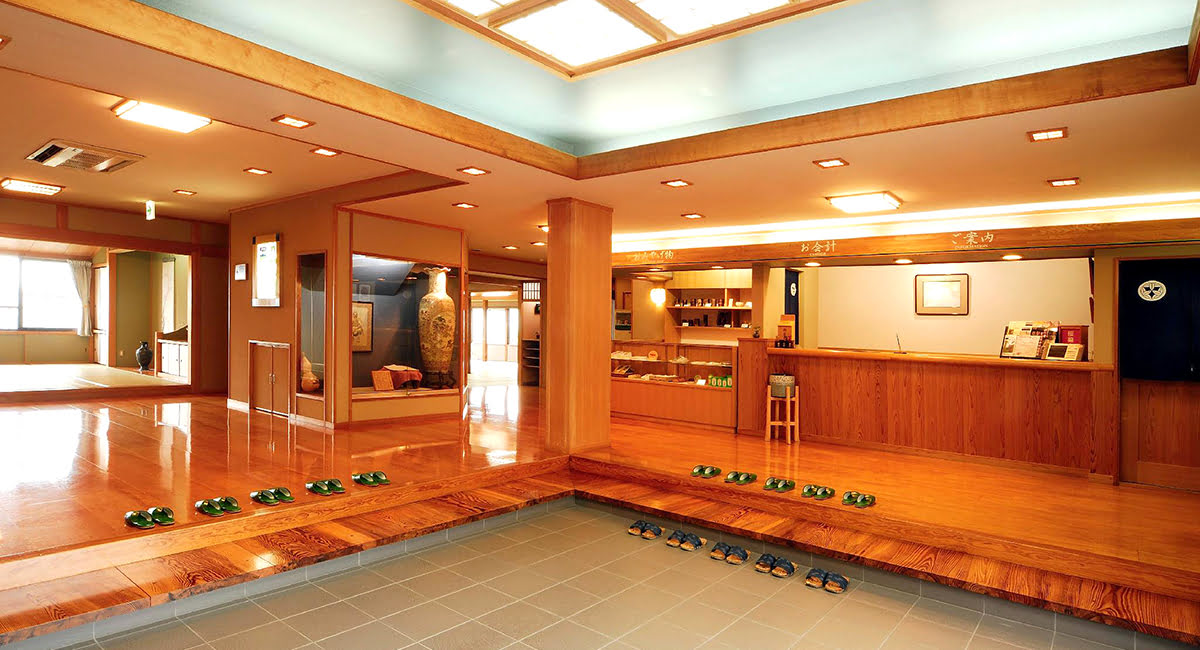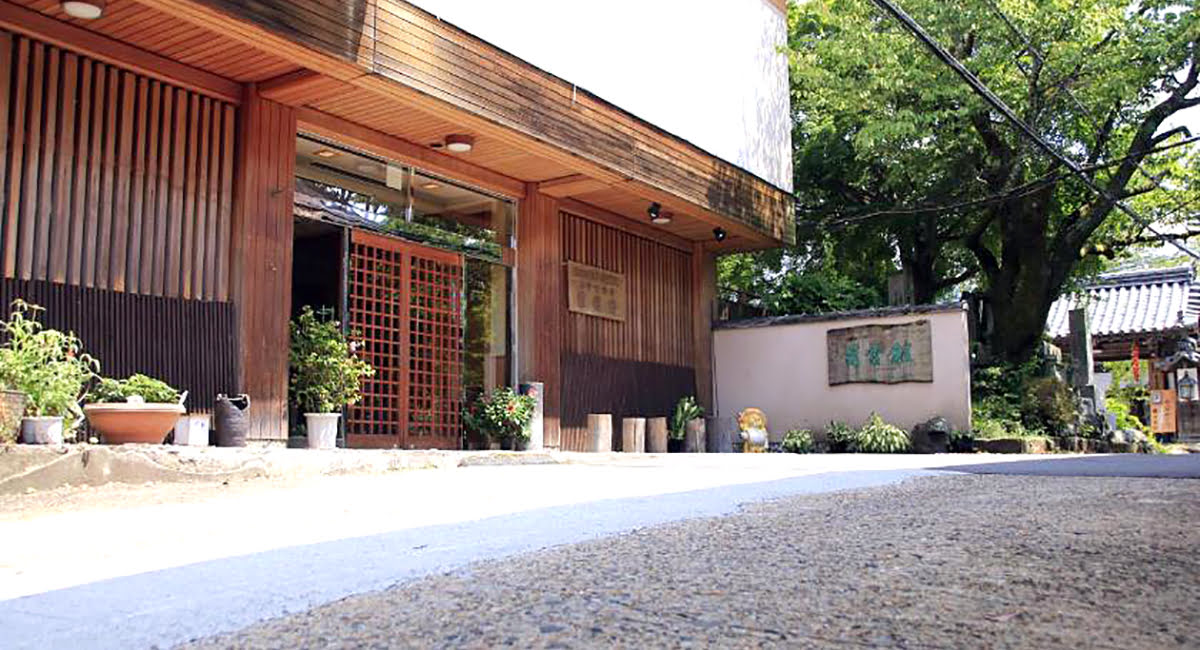A Guide to the Temples and Buddhist Images of Nara

The UNESCO World Heritage Site “Historic Monuments of Ancient Nara” encompasses several landmarks in the ancient capital of Nara. These religious sites were prominent during the Nara period (D.C. 710-794), and any Nara temple tour should include the entire list. Many temples and shrines were constructed in hopes of propelling prosperity throughout the country. The nomination of these cultural assets as one world heritage site is evidence of Nara’s dedication to preserving its 1,300 years of history. Travel through ancient Nara by exploring its historical architecture, Buddha statues and beautiful nature.
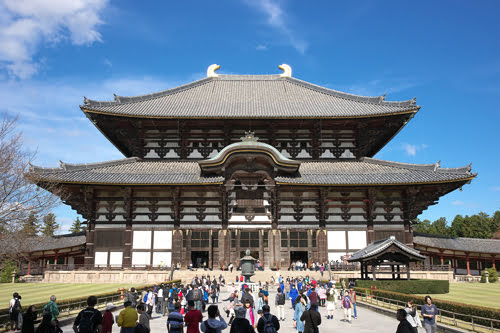
1. Nara Temple Tour | Todaiji Temple
The most impressive statue in Todaiji Temple is the 15-meter-tall Great Buddha, which is a registered UNESCO World Heritage Site. The Buddha, known as “Daibutsu” in Japanese, has an official name, “Rusha-Na-Butsu” (Vairocana Buddha), and its height is said to be 10 times taller than Shakamuni, the historical Buddha who was believed to be twice the size of an ordinary person (about 3.2m-tall). Because the statue is seated, the height is about half that size. Believed to have been built to pray for peace and happiness for all people, the Great Buddha represents the unending universe. The Daibutsu, Japan’s largest bronze statue of the Buddha, is greeted by many locals and international tourists throughout the year.
Visitors should not leave the main hall without seeing the wooden pillar with a famous hole in its base. The hole is said to be the same size as the Great Buddha’s nostrils, and anyone who can fit through the hole receives blessings.
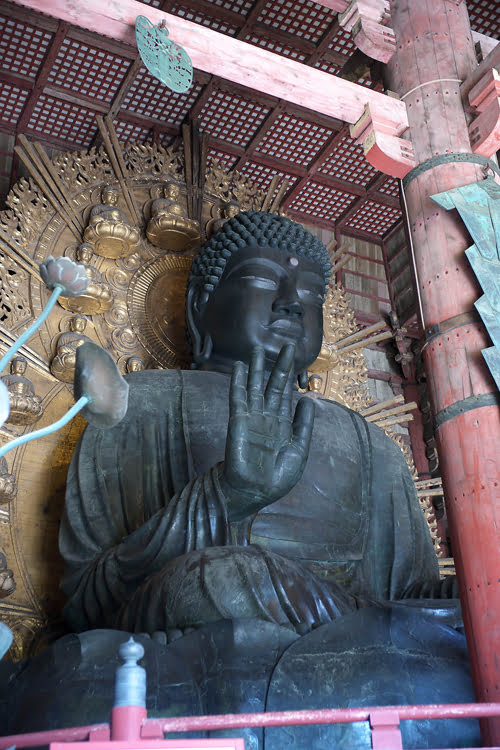

2. Nara Temple Tour | Kohfukuji Temple
Kohfukuji Temple was moved in 710 to its present location during the relocation of the national capital from Asuka to Nara. The temple is famous for its historical structures, one of them being the second highest five-storied pagoda in Japan. The Central Golden Hall (Chukondo), rebuilt for the first time in 300 years, opened to the public in the fall of 2018.

While visiting Kohfukuji, guests should not miss the National Treasure Museum, which houses one of Japan’s best collections of Buddha images. The most famous of these is a six-armed, three-faced statue of the Ashura, one of the Buddha’s protectors.
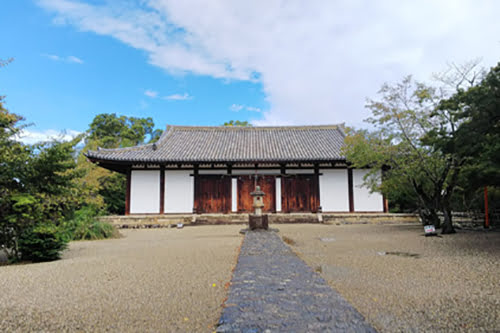
3. Nara Temple Tour | Shin Yakushiji Temple
Founded by Empress Komyo in 747 in an effort to heal her ailing husband, Shin Yakushiji Temple is dedicated to the medicine Buddha, or Yakushi Nyorai in Japanese. The main hall, a significant piece of priceless architecture in Nara, stands as it was built in the 8th century. It is surrounded by statues of 12 guardian deities, and 11 of the deities are regarded as national treasures. The deities are assigned as guardians to the medicine Buddha and the people who worship it, and each possesses a shield of armor and a weapon. It is believed that the figures were once painted with vibrant colors, but visitors to Shin Yakushiji Temple will have to use their imaginations to envision what they might have looked like when they were constructed.
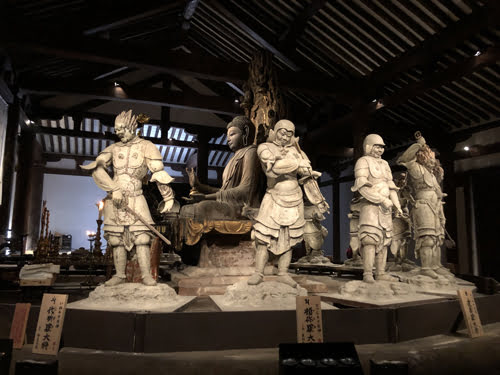
The easiest way to reach Shin Yakushiji Temple is by traveling through a narrow path called Sasakayi no Komichi from Kasugataisha Shrine.
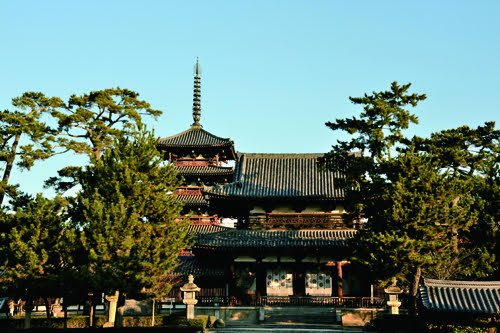
4. Nara Temple Tour | Horyuji Temple
Located in Ikaruga, Horyuji Temple is particularly notable because it is home to one of the world’s oldest wooden buildings. It houses many historical artifacts and artwork, including 3,000 pieces designated as National Treasures and Important Cultural Properties of Japan. Nominated in 1993, Horyuji Temple was the first UNESCO World Heritage Site designated in Japan.
Horyuji Temple was commissioned about 1,400 years ago by Prince Shotoku, who was one of the early promoters of Buddhism in Japan. At Horyuji Temple, the Kondo (main hall) and Five-Story Pagoda are must-see attractions and can be found on the west side of the temple grounds. On the eastern side, Yumedono is not to be missed. The Five-story Pagoda is Japan’s oldest and is said to enshrine Buddha’s ashes.
The Yumedono, or Hall of Dreams, features Guze Kannon, a mysterious statue known as the “Hidden Buddha”. The statue was discovered in the Meiji period by researchers such as American scholar Fenollosa. The statue was wrapped in silk and hidden for centuries, and it was so well preserved that its outer layer of gold foil was still intact when it was found. This Hidden Buddha exhibit is open to the public only twice a year (during spring and Autumn). Visitors should confirm if the Buddha is open to the public before visiting Horyuji Temple, as the viewing period changes annually.
Visitors can take the Yamatoji line from JR Nara Station to Horyuji Station. Those who don’t mind a short stroll can walk about 20 minutes from Horyuji Station. The other option is to take a bus directly to Horyuji-mae bus stop.
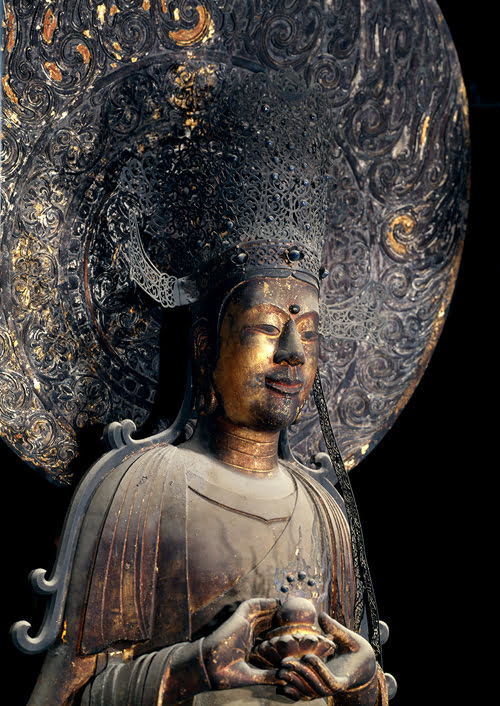
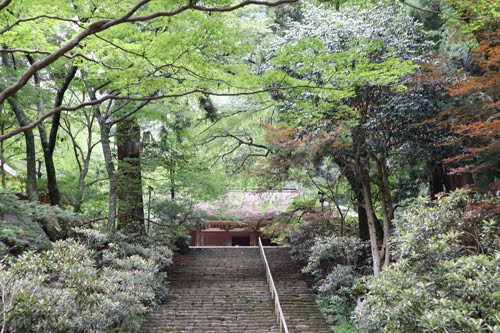
5. Nara Temple Tour | Muroji Temple
Nestled in the woods of remote mountains, the gorgeous Muroji temple has been considered a holy place since it was built. It is famous for being one of the few temples that allowed female worshipers in the old days, unlike Koyasan (Mount Koya) in Wakayama, which prohibited women to enter. Because of its open-door policy, Muroji earned the nickname “Mount Koya for Women.”
Muroji is famous for the standing statue of the Eleven-Faced Kannon and the sitting statue of Shaka-Nyorai, which dates to the early 9th century. Both statues are known for their benevolent facial expressions.
As visitors explore deeper into the forest, they will find a beautiful five-story pagoda, the smallest of its kind (standing outside) in Japan.
To get to Muroji from JR Nara Station, take the JR Manyo Mahoroba line to Sakurai Station. Change to the Kintetsu Osaka line and take the express train to Muroguchiono Station. From there, hop on the bus to get to Muroji-mae bus stop.

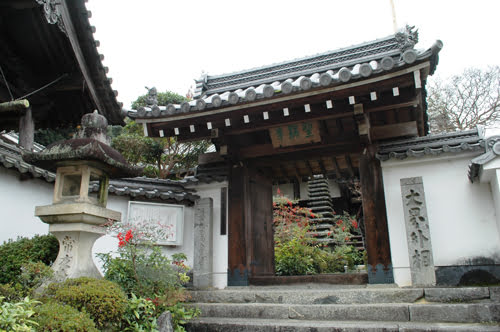
6. Nara Temple Tour | Shorinji Temple
Shorinji Temple was established by a monk named Joe in the early 8th century. A majority of the buildings that remain in the complex today were built in the 18th century during the Edo period. Set atop a hill, Shorinji Temple has a veranda off the main hall that offers a great panoramic view of the lush green valley below.
Shorinji Temple also offers visitors the chance to see unique pieces of Buddhist art, particularly the Eleven-faced Kannon, a National Treasure of Japan. The statue, featured in many pieces of highly-praised literature, gives mercy to people and leads them towards salvation. The gold-plated wooden figure wears a crown of small faces, and each face points in a different direction, allowing the Eleven-Faced Kannon to bestow her mercy on everyone around her. This amazing national treasure stands just more than two meters tall and has remained astonishingly well preserved for many years.
To reach Shorinji Temple from JR Nara Station, take the JR Manyo Mahoroba line to Sakurai Station and board a bus bound for Tanzan. Get off at Shorinji-mae bus stop.
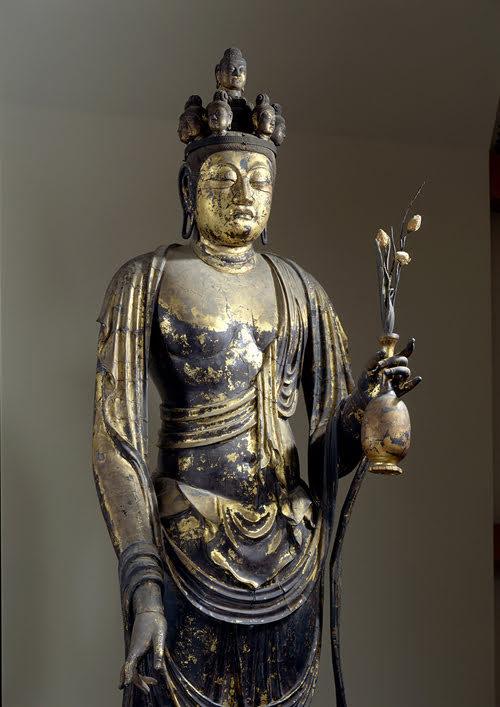
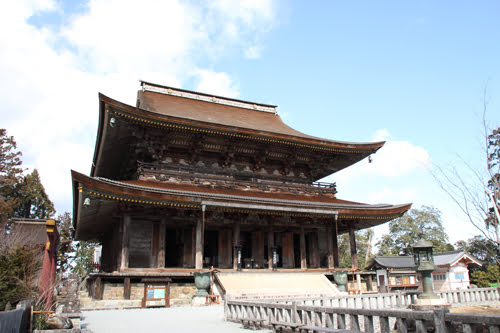
7. Nara Temple Tour | Kinpusen-ji Temple
The area stretching from Mount Yoshino (the best cherry blossom site in Japan!) to Kumano is regarded as a sacred place and gained the name Kinpusen-ji during an ancient era. Towards the end of the Asuka period, a Japanese mystic known as En no Gyoja started ascetic practices in the region and established “Shugendo,” or Japanese mountain asceticism, which incorporates Shinto and Buddhist concepts. The founding dojo of this practice is Kinpusen-ji temple.
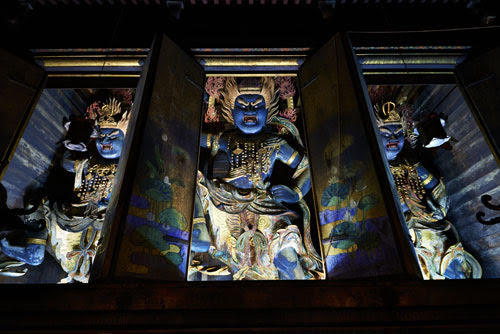
The origin of this temple is said to have come from a religious awakening by En no Gyoja when he engraved a depiction of the deity Kongo Zao Gongen on a cherry blossom tree while practicing asceticism on Mount Yoshino and Mount Omine.
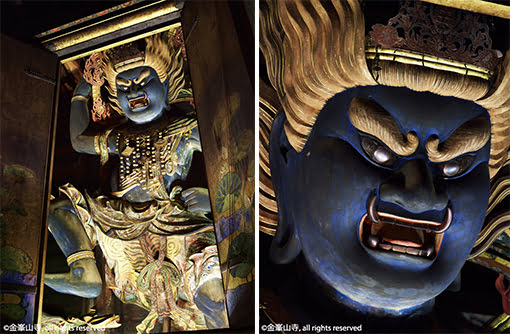
In the main hall of Zao-do, there are three 7-meter-tall Kongo Zao Gongen statues. The exhibit usually remains hidden but goes on display to the public at certain times of the year. Visitors can check the temple’s official website to see when the next viewing will take place.
To get to Kinpusen-ji Temple from Nara City, take the Kintetsu line from Kintetsu-Nara Station to Yamato-Saidaiji Station and change to the Kashihara line. From there, go to Kashiharajingu-Mae Station and change trains to reach Yoshino Station.
From Osaka, passengers can take the special express train from ŌSAKA-ABENOBASHI Station to Yoshino Station, which takes 85 minutes. From Yoshino Station, visitors can take the Yoshinoyama Ropewayto Yoshinoyama Ropeway Station. A brief 10-minute stroll will get guests to Kinpusen-ji.
Check In to a hotel or ryokan in Yoshino
FIND & BOOK A HOTEL IN YOSHINO TODAY
**The photographs contained on this article are protected by copyright law. Any secondary usage of photos in this article without prior consent is prohibited.
You may also like

Tigers, Whale Sharks & Jungle Giants: Discover Southeast Asia’s Wild Side
Southeast Asia might just be one of the world’s best-kept secrets for nature lovers. With elusive tigers roaming ancient rainforests and whale sharks gliding through coral-rich seas, this region is teeming with biodiversity, but it’s often overlooked as a wildlife destination. In this guide, we’ll highlight some of Southeast Asia’s most unforgettable wildlife encounters and how your trip can support the protection of the places, people, and species that make this region so unique.

Travel Advisories for Indian Travelers
Indian travelers are advised to check this website before traveling abroad: Ministry of External Affairs Travel Advisory Travel advisories are issued by …
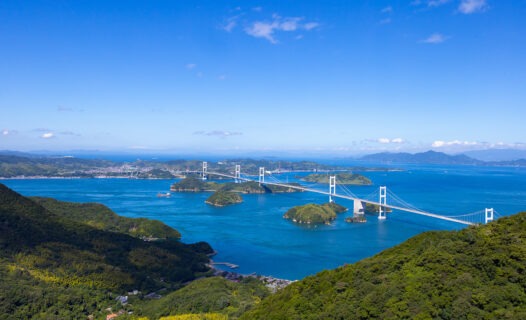
Feel Revived by Cultural Activities & Hot Springs on a Trip to Ehime
Ehime Prefecture offers an abundance of nature and culture. It is full of exciting sea and mountain activities, such as cycling the 70 km Shimanami Kaido route around the islands in the Seto Inland Sea, trekking the Shikoku Pilgrimage, and climbing Mt. Ishizuchi—the highest peak of western Japan. You can also relax at Dogo Onsen, one of Japan’s most famous hot spring areas, or explore Ehime’s historical spots, like Matsuyama Castle and the Edo Period towns. It takes around 30 minutes to travel from Matsuyama Airport to Matsuyama City by airport bus. And with trams that travel within Matsuyama City and to Dogo Onsen, accessing tourist attractions around the area couldn’t be easier!
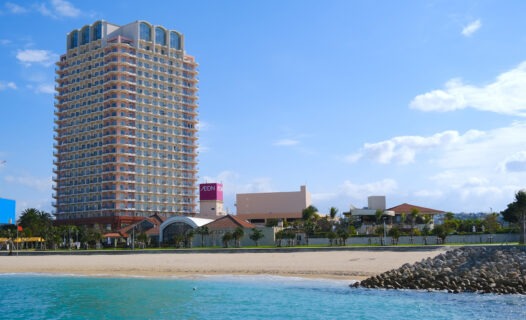
Your ultimate Okinawan getaway awaits! Discover, relax, and indulge at The Beach Tower Okinawa
This article is sponsored by “Kyoritsu Maintenance Co., Ltd.” Presented by Kyoritsu Maintenance Co., Ltd. / The Beach Tower Okinawa Chatan Town …
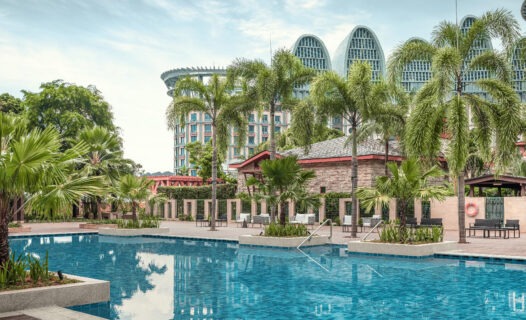
Best Hotels in Singapore: Top Stays for Luxury, Leisure, and Everything In Between
Where you stay in Singapore will play a big role in how you experience the city. Here is a look at some of the best hotels in Singapore highlighting standout stays across the city and Sentosa Island. From stylish urban retreats to family-friendly resorts, you’ll find top-notch options to match your itinerary, travel style, and budget.

Best Hotels in Malaysia: Where to Stay Across the Country
From buzzing city centers to tropical coastlines, Malaysia is a country that caters to every kind of traveler with every kind of hotel. Here’s a roundup of some of the top hotels in Malaysia that combine excellent locations, great amenities, and real value, helping you narrow down where to stay in Malaysia no matter your travel style or budget.

Top Hotels in Hong Kong: Best Places to Stay Across the City
Whether you’re visiting Hong Kong for the vibrant food scene, high-rise shopping districts, or a peaceful escape in the outlying islands, choosing the right place to stay can elevate your entire experience. This roundup of the top hotels in Hong Kong brings together stylish urban retreats, conveniently located business hotels, and relaxing escapes, all with easy access to the city’s most iconic spots. If you’re wondering where to stay in Hong Kong, these top picks are a great place to start.
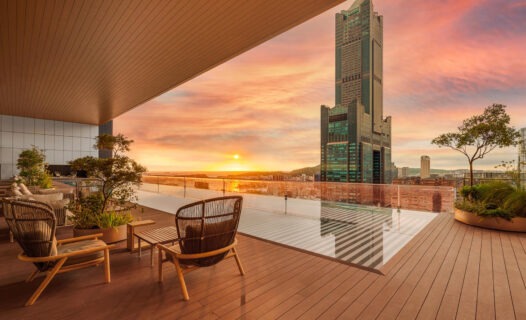
Best Hotels in Taiwan: Top Picks for Every Type of Traveler
Whether you’re drawn to Taiwan for its street food, hiking trails, or vibrant cultural history, finding the right place to stay can make your trip even more memorable. The best hotels in Taiwan offer more than just a place to sleep; they help complete the whole experience. Whether you’re staying for a weekend or a few weeks, these hotel recommendations will help you find the right fit for your travel style.
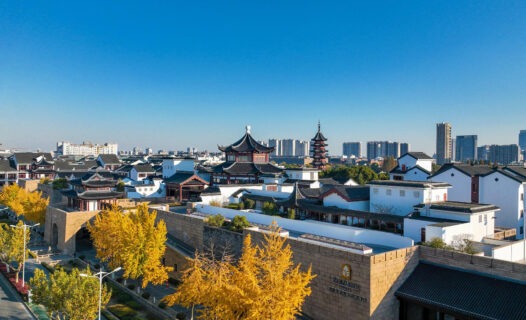
Best Hotels in China: Top Stays from Shenzhen to Suzhou
From tech-forward business hubs in Shenzhen to scenic water towns like Suzhou, this overview of the best hotels in China will help you figure out where to stay in China, no matter your travel style. With options ranging from sleek skyscraper suites to tranquil garden resorts, there’s truly something for everyone.

What to Buy in Seoul: Shop in Myeongdong, Namdaemun & More!
Indeed, the shopping scene is legendary in South Korea, and knowing what to buy in Seoul is key to planning a fantastic …
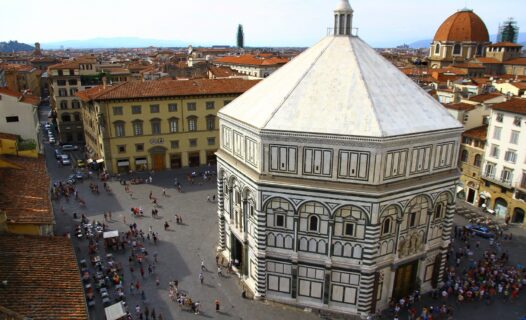
Discover 10 Fun Things to Do in Florence Beyond the Tourist Trail
Discover 10 unforgettable experiences in Florence beyond the tourist trail. Uncover hidden gems and local favorites—start your adventure today!
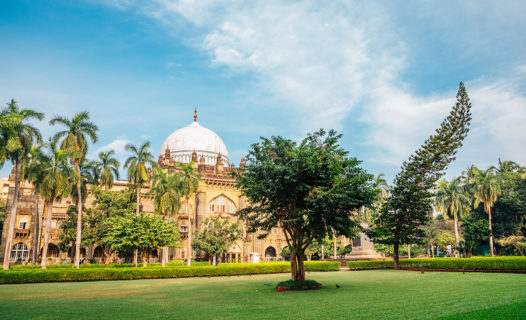
Discover 10 Fun Places to Visit in Mumbai with Friends
Discover the ultimate Mumbai adventure! Explore 10 fun-filled places to visit in Mumbai with friends and create unforgettable memories. Start your journey now!

Chill Out in Goa: Explore the Best Snow Park Experience
Discover the ultimate snow park experience in Goa! From thrilling rides to family fun, explore our guide and plan your perfect chill-out day.

Discover Where Sinulog Festival is Celebrated in Cebu!
Discover where the Sinulog Festival is celebrated in Cebu, Philippines! Join the vibrant festivities and immerse yourself in this unforgettable cultural experience.
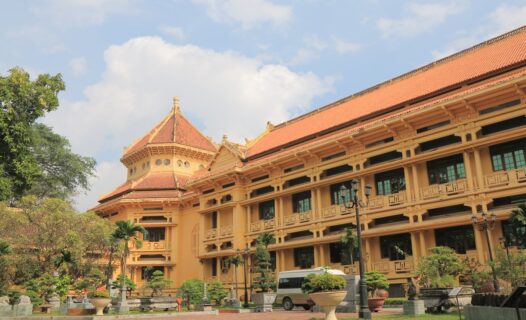
Discover Hanoi's Military History Museum: Fun & Adventure!
Discover the captivating tales at Hanoi's Military History Museum! Dive into a fun day of learning and adventure—plan your visit now!

Capture Lory Park Zoo Photos: Your Ultimate Johannesburg Guide
Capture unforgettable moments at Lory Park Zoo! Discover tips for stunning lory park zoo photos and make your Johannesburg adventure memorable. Click to learn more!

Discover Mumbai's Famous Places: Top 10 Epic Adventures
Discover Mumbai's famous places that promise an epic adventure! Explore our top 10 must-visit spots and start planning your unforgettable journey today!
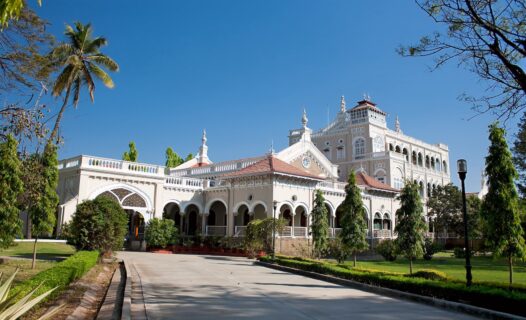
The Aryavart Escape: Snap Stunning Panshet Photos in Pune
Discover the Aryavart Escape and capture stunning Panshet photos on your Pune getaway! Dive into our guide for tips and breathtaking spots. Start your adventure now!

Explore Hanoi's Train Street: Coffee & Scenic Journeys
Discover the charm of Hanoi's Train Street! Join us for a day of thrilling train sightings and delightful coffee sips. Click to explore this unique experience!

Swim with Sharks at Dubai Aquarium: An Unforgettable Adventure
Dive into adventure at the Dubai Aquarium! Discover the thrill of swimming with sharks and make unforgettable memories. Plan your visit today!
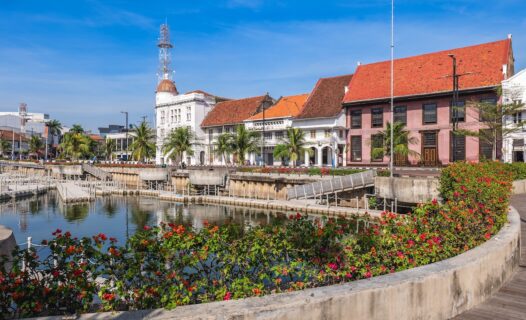
Central Jakarta: Discover Street Eats & Hidden Cafés
Discover Central Jakarta's vibrant food scene! Dive into street eats and hidden cafés that will tantalize your taste buds. Start your culinary adventure now!
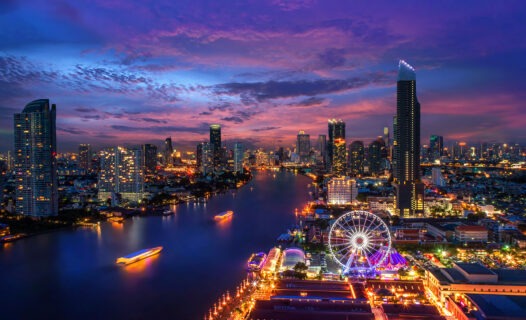
Discover 10 Quirky Bangkok Things to Do That Will Make You Smile
Discover Bangkok's quirky side with 10 unusual things to do that will make you smile. Dive into the fun—explore now for a unique adventure!
